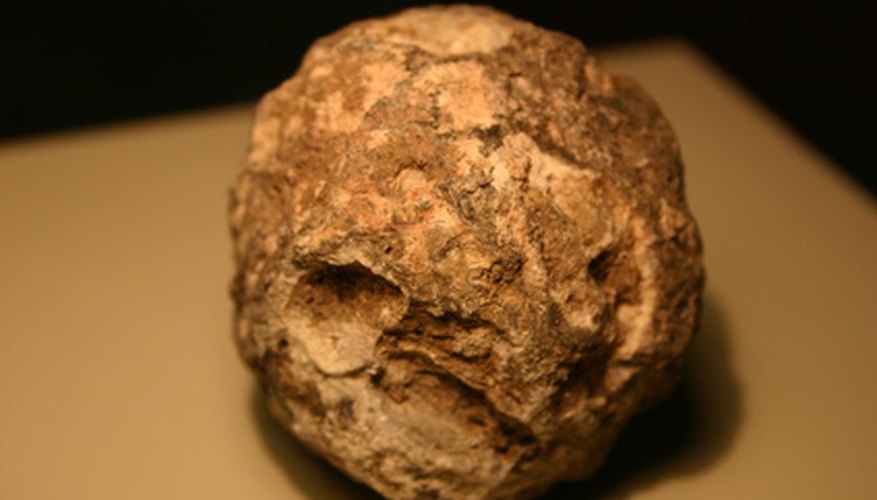Geodes were formed six to eight million years ago and are spherical-shaped rocks that are typically hollow inside and always lined with crystals. The most common mineral found in geodes is quartz in clear, pink or purple colours. Geodes can be found anywhere in the world and are most commonly located in deserts, volcanic ash beds or regions containing limestone. In the United States, geodes are commonly found in California, Utah and Arizona, and the geode is the state rock of Iowa.
Locate an area where you are allowed to dig your own geodes. Often, the areas where you can find a geode are privately owned land or preservation areas so you need permission before digging. Some state parks have dig-your-own areas for geode and other rock hunting. Also, consult other geode hunters to find locations or GPS coordinates where they have found geodes.
- Geodes were formed six to eight million years ago and are spherical-shaped rocks that are typically hollow inside and always lined with crystals.
- Often, the areas where you can find a geode are privately owned land or preservation areas so you need permission before digging.
Obtain a permit for collection of geodes, if needed. Most states only require permits for collecting a large quantity of geodes for commercial purposes. Consult the local laws before heading out for your geode hunting.
Hike to a location for geode digging, wearing your hiking gear. Dig with a shovel or pick in a location where you think you could find a geode, while wearing safety glasses. In an area where other geode hunters dig, it is easiest to dig where other rocks have been excavated.
- Obtain a permit for collection of geodes, if needed.
- Dig with a shovel or pick in a location where you think you could find a geode, while wearing safety glasses.
Examine any rock you find in these areas before discarding them. Geodes can be identified by their spherical shape and light weight, and most geodes are two to three inches in diameter.
Break any rock you find that may be a geode in half by striking it with the hammer until it cracks, or you can take it to a local rock shop to have it cut in half.
WARNING
Often the dirt surrounding geodes is soft and susceptible to caving, so be cautious. When travelling in the desert, carry lots of extra water and a detailed local map that shows danger areas. Do not rely on a GPS, which doesn't take into account changes to road conditions and closed roads.
